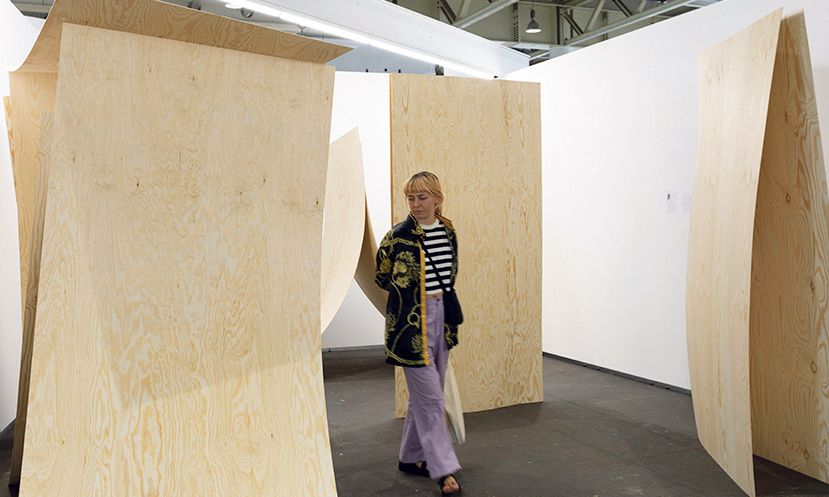Wooden it be nice: Martin Hotter’s sculptures at Vin Vin gallery are yet to sell David Owens
“It’s a slow year,” says Camille Houzé, a director at Nicoletti Contemporary gallery, which is showing at Liste for the second time this year. His sentiments are echoed by many exhibitors at the emerging art fair. Nicoletti is showing the New York-based artist Nana Wolke. “Typically, with an artist as popular as Nana, our stand would be sold out by opening day. Not the case this week,” Houze says. There are “discussions” with a major German private collection over a large $25,000 installation of speakers emitting noises gathered by Wolke from New York’s Lower East Side, but it remained unsold as of yesterday afternoon.
Indeed, most ambitious large-scale projects at Liste have yet to find homes, including Martin Hotter’s plywood works at Vin Vin. The gallery’s manager, Claudia Caporusso, says there is interest from a major museum to acquire some of the works, but nothing concrete has come of it yet. Vin Vin’s commitment to a stand devoted entirely to hard-to-place installations is a rarity at Liste this year. Almost all galleries showing big or conceptually ambitious projects are also bringing more commercially viable wall-based works.
At the stand of the Los Angeles gallery François Ghebaly, showing Ragini Bhow, a striking floor-based sculpture covered in ash also remains unsold, but the gallery has shifted several acrylic and crystal abstract paintings for $5,500. Meanwhile, Rele, a gallery that began in Lagos and now has spaces in Los Angeles and London, has sold two photographic prints on textile by Gladys Kalinchi for $2,000. The large video and found object installation for $10,000 is still unsold.
Perhaps anticipating a softer market, the Milan gallery Clima has brought to its third Liste its most commercially viable stand to date, says its founder, Francesco Lecci, with sand sculptures by Nicola Martini, priced at €8,000 to €13,000. “Mind you, the last two years we showed a talking sofa and a stand entirely of video works. We’ve still never brought paintings,” Lecci says.

